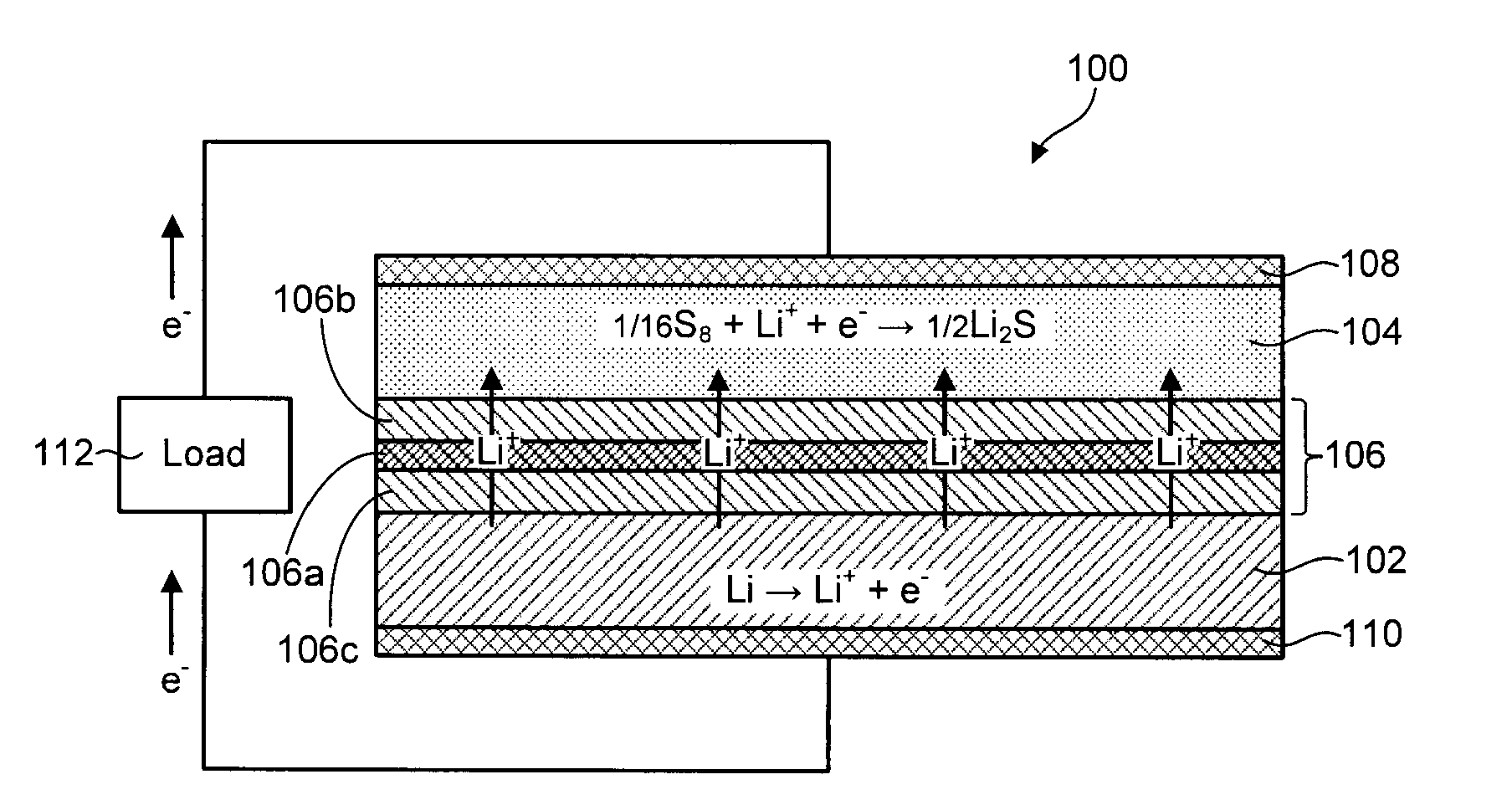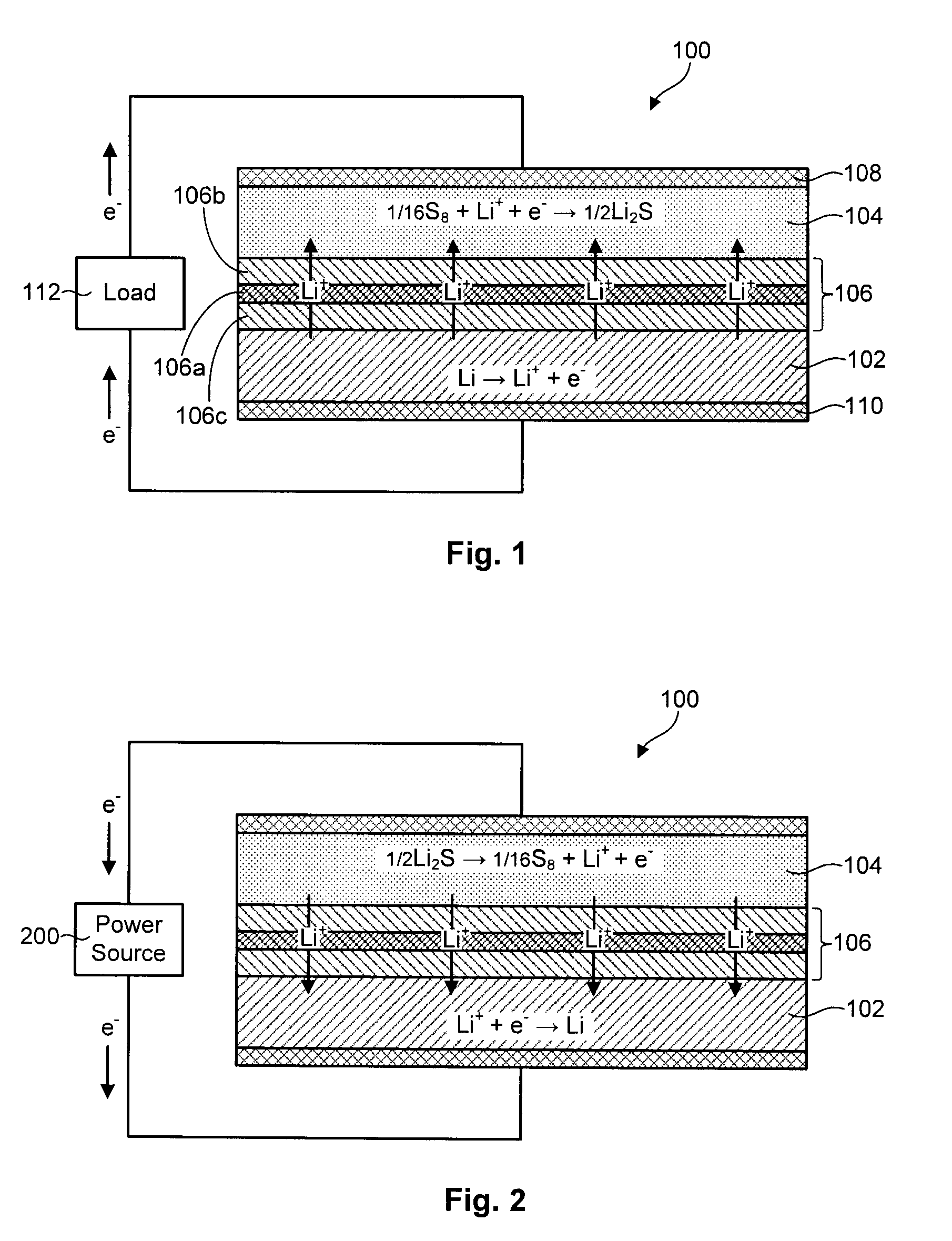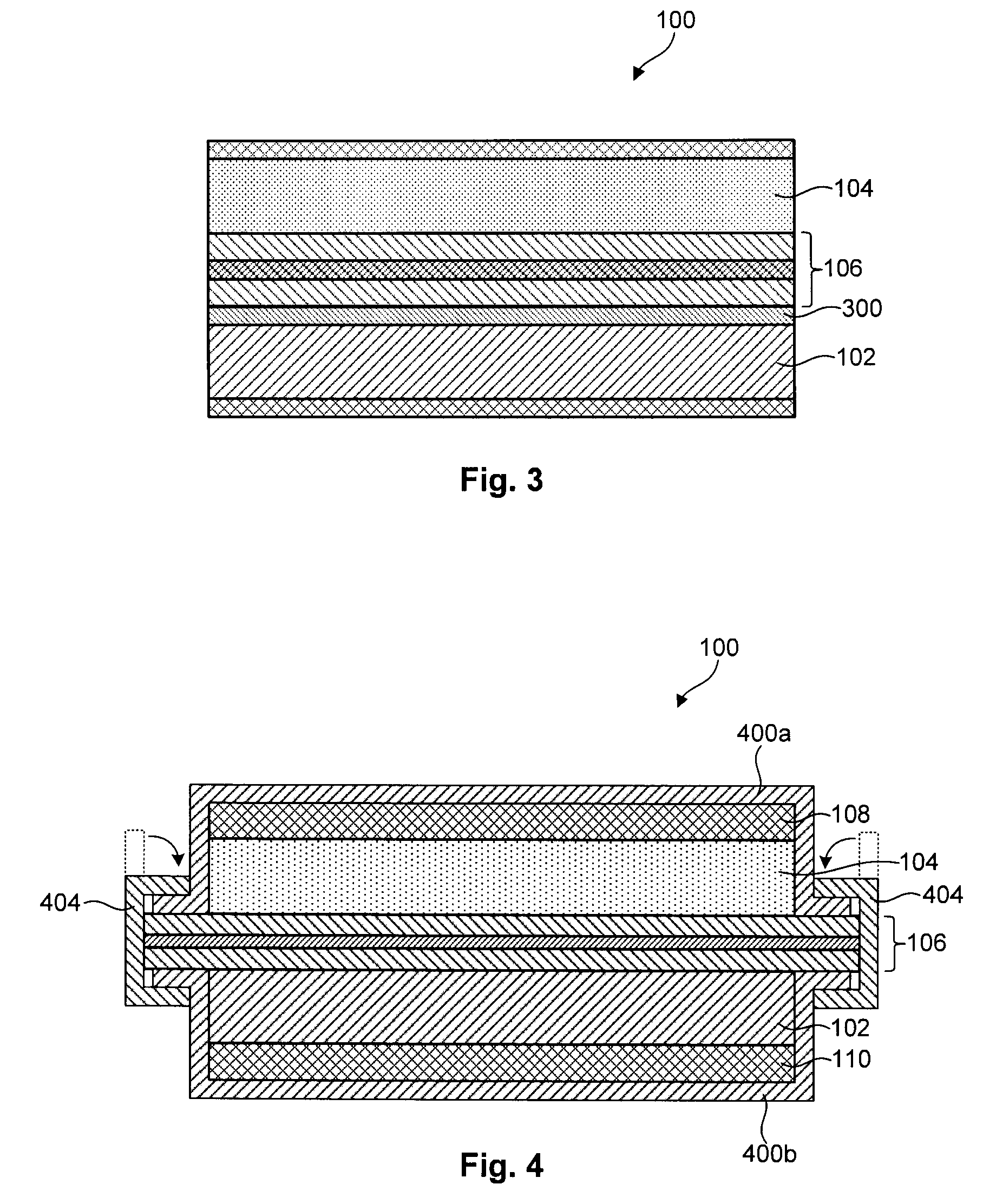Lithium-sulfur battery with a substantially non-pourous membrane and enhanced cathode utilization
a lithium-sulfur battery, substantially non-pourous membrane technology, applied in the field of batteries, can solve the problems of high self-discharge, rapid capacity fade on cycling, and failure of rechargeable lithium-sulfur batteries to achieve commercial success
- Summary
- Abstract
- Description
- Claims
- Application Information
AI Technical Summary
Benefits of technology
Problems solved by technology
Method used
Image
Examples
Embodiment Construction
[0027]It will be readily understood that the components of the present invention, as generally described and illustrated in the Figures herein, could be arranged and designed in a wide variety of different configurations. Thus, the following more detailed description of the embodiments of the invention, as represented in the Figures, is not intended to limit the scope of the invention, as claimed, but is merely representative of certain examples of presently contemplated embodiments in accordance with the invention. The presently described embodiments will be best understood by reference to the drawings, wherein like parts are designated by like numerals throughout.
[0028]Referring to FIG. 1, one embodiment of a lithium-sulfur battery 100 under load is illustrated. In general, a lithium-sulfur battery 100 in accordance with the invention that overcomes various problems of the prior art may include a lithium-containing anode 102, a sulfur-containing cathode 104, and a substantially no...
PUM
 Login to View More
Login to View More Abstract
Description
Claims
Application Information
 Login to View More
Login to View More - R&D
- Intellectual Property
- Life Sciences
- Materials
- Tech Scout
- Unparalleled Data Quality
- Higher Quality Content
- 60% Fewer Hallucinations
Browse by: Latest US Patents, China's latest patents, Technical Efficacy Thesaurus, Application Domain, Technology Topic, Popular Technical Reports.
© 2025 PatSnap. All rights reserved.Legal|Privacy policy|Modern Slavery Act Transparency Statement|Sitemap|About US| Contact US: help@patsnap.com



